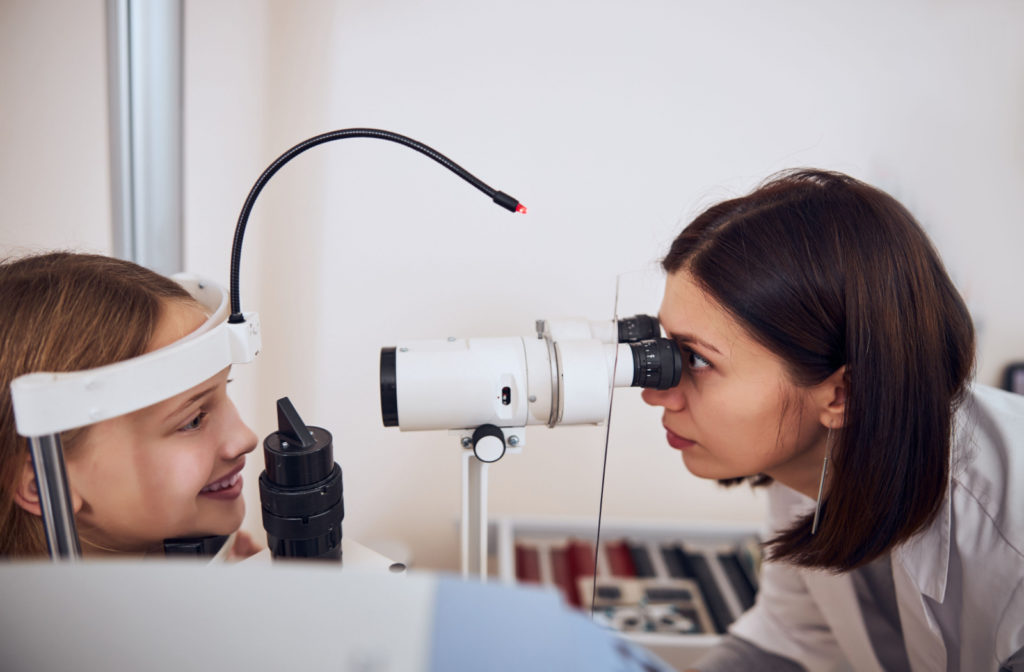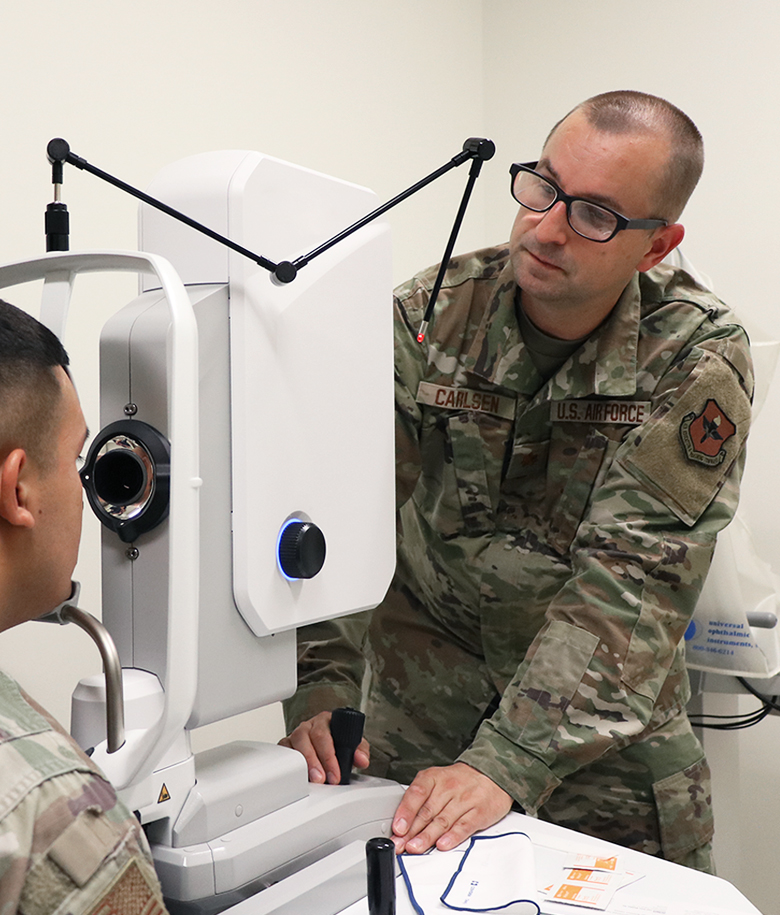The Importance of Regular Check-Ups with an Eye Doctor Optometrist
The Importance of Regular Check-Ups with an Eye Doctor Optometrist
Blog Article
Checking Out the current Technical Developments in Optometry and What They Mean for Optometrists
From the precision of Optical Comprehensibility Tomography to the nuanced insights supplied by AI-driven diagnostic tools, these technologies are setting new standards in patient evaluation and treatment. As these developments penetrate the technique, optometrists are encountered with the obstacle of accepting these tools to enhance individual end results.
Advancements in Diagnostic Tools
Advancing the area of optometry, innovations in diagnostic devices have actually reinvented the method eye treatment specialists evaluate and identify visual impairments and ocular problems. The past decade has experienced considerable technical developments, allowing even more exact and extensive evaluations.
An additional key advancement is the intro of innovative corneal topography systems, which map the surface area curvature of the cornea with precision. These tools are especially valuable for fitting contact lenses and diagnosing corneal problems. Electronic retinal imaging has transformed standard ophthalmoscopy, using in-depth, scenic sights of the retina that assist in extensive visual examinations.
The advancement of wavefront aberrometry has actually also been essential, making it possible for the analysis of refractive errors with unparalleled precision (Opticore Optometry). This technology helps in personalizing rehabilitative lenses and improving surgical end results for refractive surgical procedures. Jointly, these analysis innovations equip eye doctors to supply exceptional individual care, making certain early intervention and tailored treatment approaches, ultimately improving visual health and wellness end results
AI in Individual Administration
Structure on the structure of advanced diagnostic devices, the incorporation of expert system (AI) in person management represents a transformative jump for optometry. AI systems are progressively used to improve performance, precision, and customization in person care. By analyzing large amounts of data, AI can determine patterns and forecast potential ocular conditions, making it possible for optometrists to customize treatments better. This capability is crucial in managing chronic eye illness such as glaucoma and diabetic retinopathy, where early discovery and continuous surveillance are essential.
Furthermore, AI-driven systems facilitate streamlined client communications and administrative procedures. Automated organizing, online examinations, and personalized follow-up strategies not just enhance client contentment however likewise maximize time administration for specialists. These systems can triage people based upon the seriousness of their conditions, ensuring that those in vital need receive timely focus.
Furthermore, AI improves decision-making by supplying optometrists with evidence-based referrals and treatment pathways. By incorporating information from electronic health documents, AI tools provide understandings that educate medical decisions, minimizing the threat of mistakes and boosting person results. As AI remains to develop, its role in client management will likely expand, improving the landscape of optometric care.
Advancements in Retinal Imaging
In the world of optometry, retinal imaging has actually experienced impressive technological developments that are improving diagnostic capacities and individual treatment. Advancements such as Optical Coherence Tomography (OCT) and fundus digital photography have actually changed how eye doctors examine the retina and imagine.
Enhanced imaging techniques like OCT angiography are further refining diagnostic precision. Eye Doctor Optometrist. Such advancements assist in the recognition of min retinal adjustments that might signify condition progression.
Moreover, improvements in fabricated knowledge are augmenting retinal imaging by making it possible for automated evaluation of huge datasets. These systems aid optometrists in identifying patterns a measure of pathology, consequently enhancing diagnostic precision and efficiency. Collectively, these advancements are transforming retinal imaging right into a foundation of contemporary eye care, improving outcomes and expanding therapeutic possibilities.
Teleoptometry's Expanding Function
Teleoptometry is significantly coming to be a vital part of eye treatment, driven by improvements in digital interaction and diagnostic devices. As optometry embraces digital makeover, teleoptometry facilitates remote examinations, permitting eye doctors to expand their services beyond conventional limits. This is particularly advantageous in rural and underserved areas where access to specialized eye care is important link typically limited. By leveraging high-resolution video clip conferencing and advanced retinal imaging, optometrists can conduct comprehensive eye exams from check these guys out afar, guaranteeing timely diagnosis and therapy.
The assimilation of fabricated knowledge (AI) further enhances teleoptometry, enabling the analysis of aesthetic data and helping in the discovery of ocular problems such as glaucoma and diabetic retinopathy. AI-powered formulas can swiftly translate complex imaging data, giving optometrists with beneficial understandings that strengthen medical decision-making.
Additionally, teleoptometry supports continuity of care with smooth integration with digital wellness records (EHRs), permitting optometrists to preserve comprehensive person backgrounds. This ensures that patients get constant and customized treatment even when seeking advice from various professionals.
In spite of these advantages, challenges remain, including making sure data safety and managing person assumptions. Nevertheless, teleoptometry represents a substantial stride towards even more easily accessible, reliable, and patient-centered eye treatment. As innovation progresses, its function is poised to expand better.

Future Patterns in Eye Treatment
A myriad of cutting-edge trends is readied to reshape the future of eye care, driven by technological innovations and the progressing demands of people. One considerable trend is the combination of man-made knowledge (AI) in diagnostics, which promises to enhance the precision and performance of eye assessments. AI formulas can evaluate huge amounts of data from retinal pictures, potentially identifying conditions like diabetic person retinopathy and get redirected here glaucoma earlier than typical techniques.
Additionally, customized medicine is obtaining grip in optometry, with hereditary screening educating customized therapy plans. This approach aims to enhance patient end results by tailoring interventions to individual hereditary accounts. Wearable technology, such as wise get in touch with lenses, is likewise coming up, using real-time surveillance of intraocular pressure or sugar levels, hence supplying continuous understandings right into systemic and eye health.
The adoption of enhanced fact (AR) and digital fact (VR) in training and client education and learning is an additional emerging fad. These innovations use immersive experiences that can boost understanding and skills both for eye doctors and people. As these fads advance, optometrists have to remain abreast of technical innovations to offer innovative care, ensuring improved patient results and fulfillment in the vibrant landscape of eye care.
Conclusion

Collectively, these diagnostic developments equip eye doctors to supply premium patient treatment, guaranteeing early treatment and tailored therapy strategies, inevitably boosting aesthetic health and wellness outcomes.

As these modern technologies proceed to advance, optometrists need to adapt and integrate them right into method, eventually optimizing workflow effectiveness and raising the criterion of eye care delivered to individuals.
Report this page